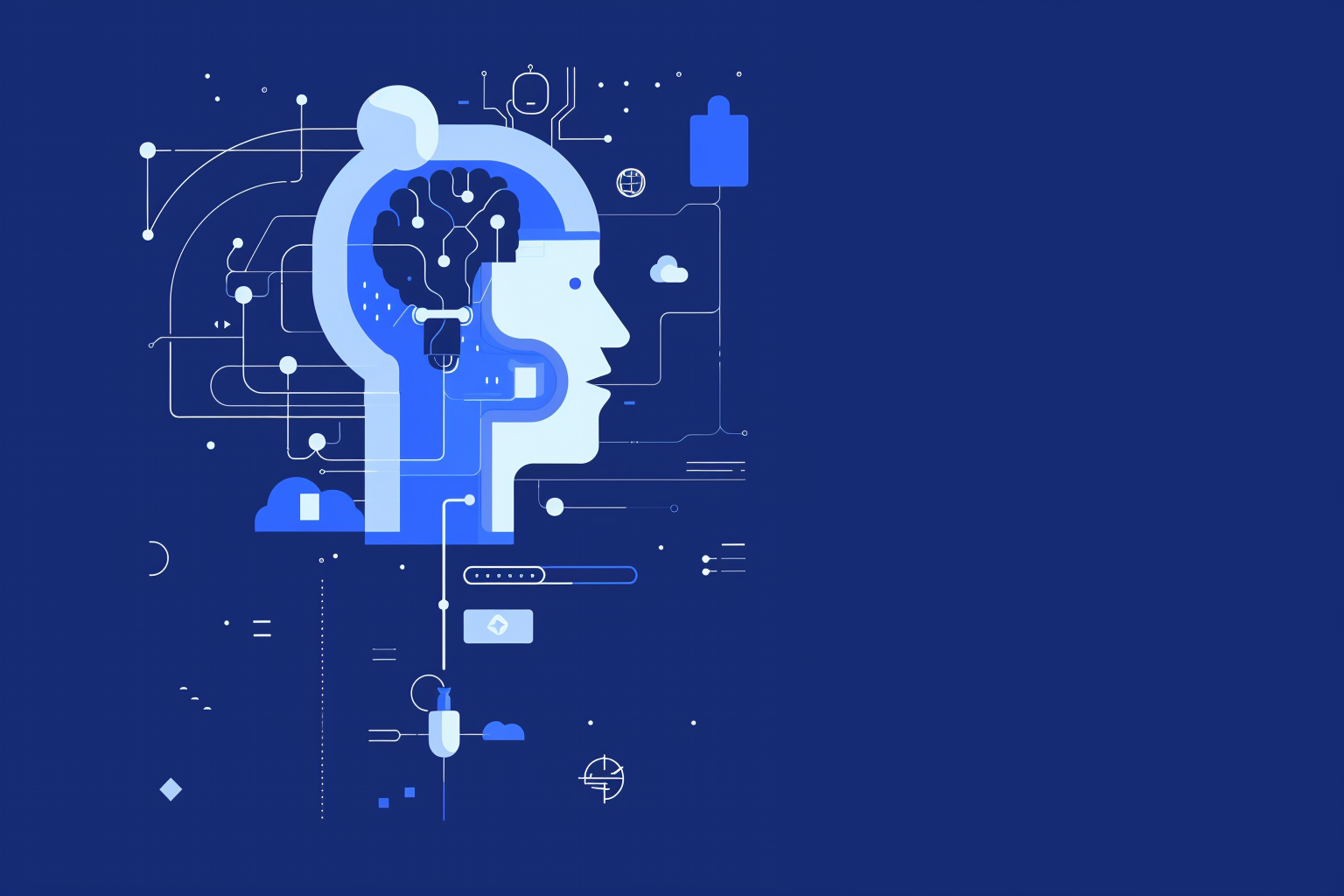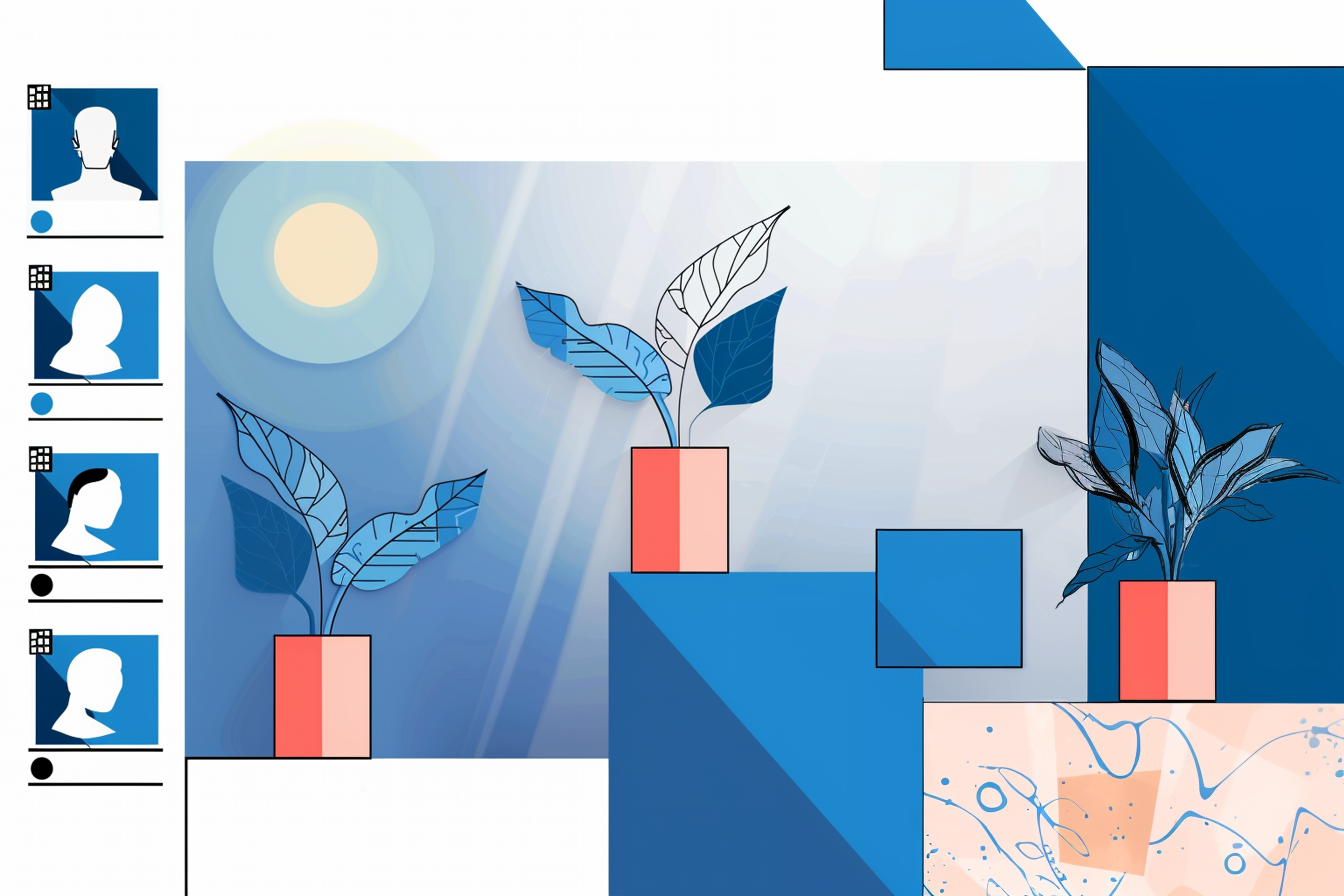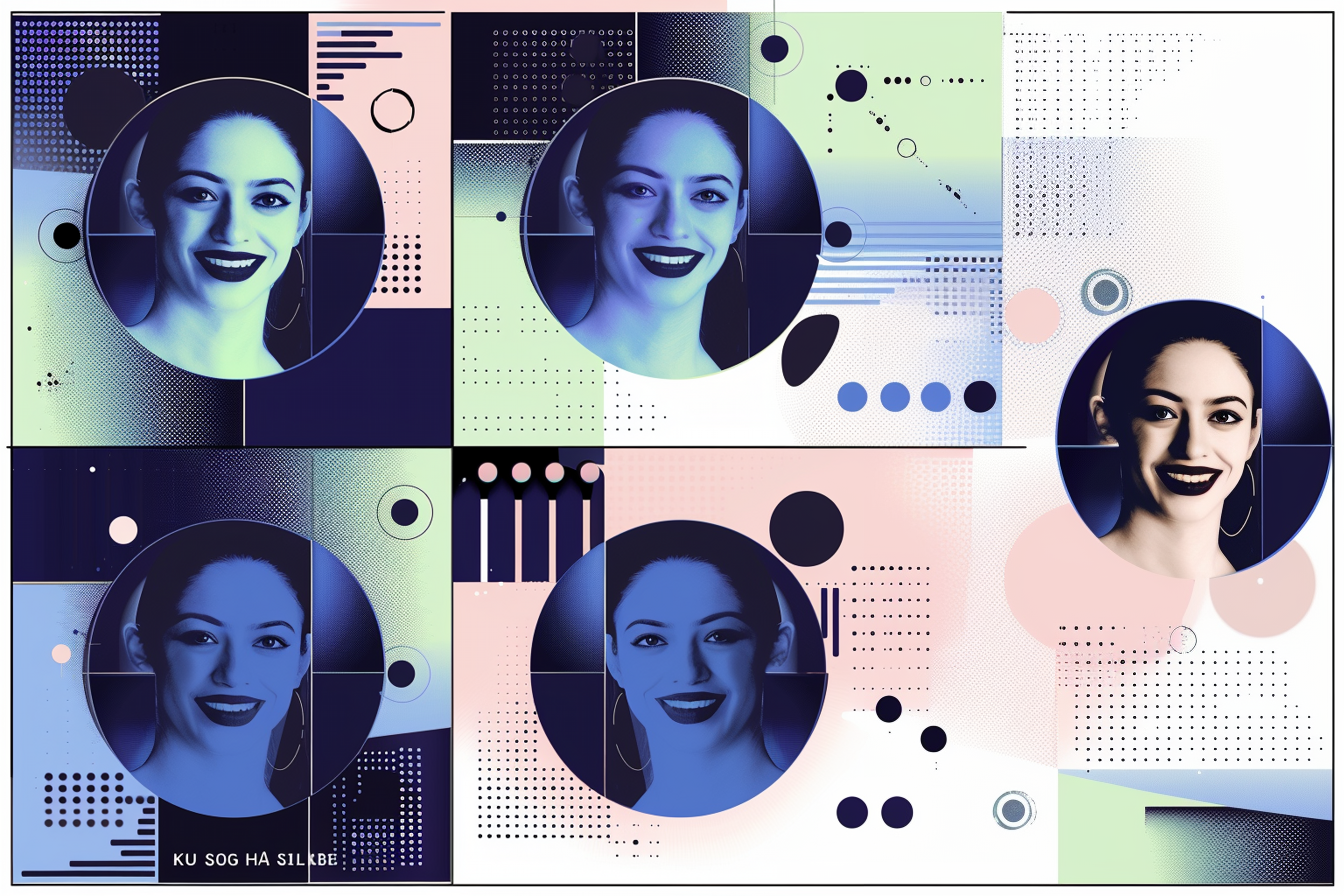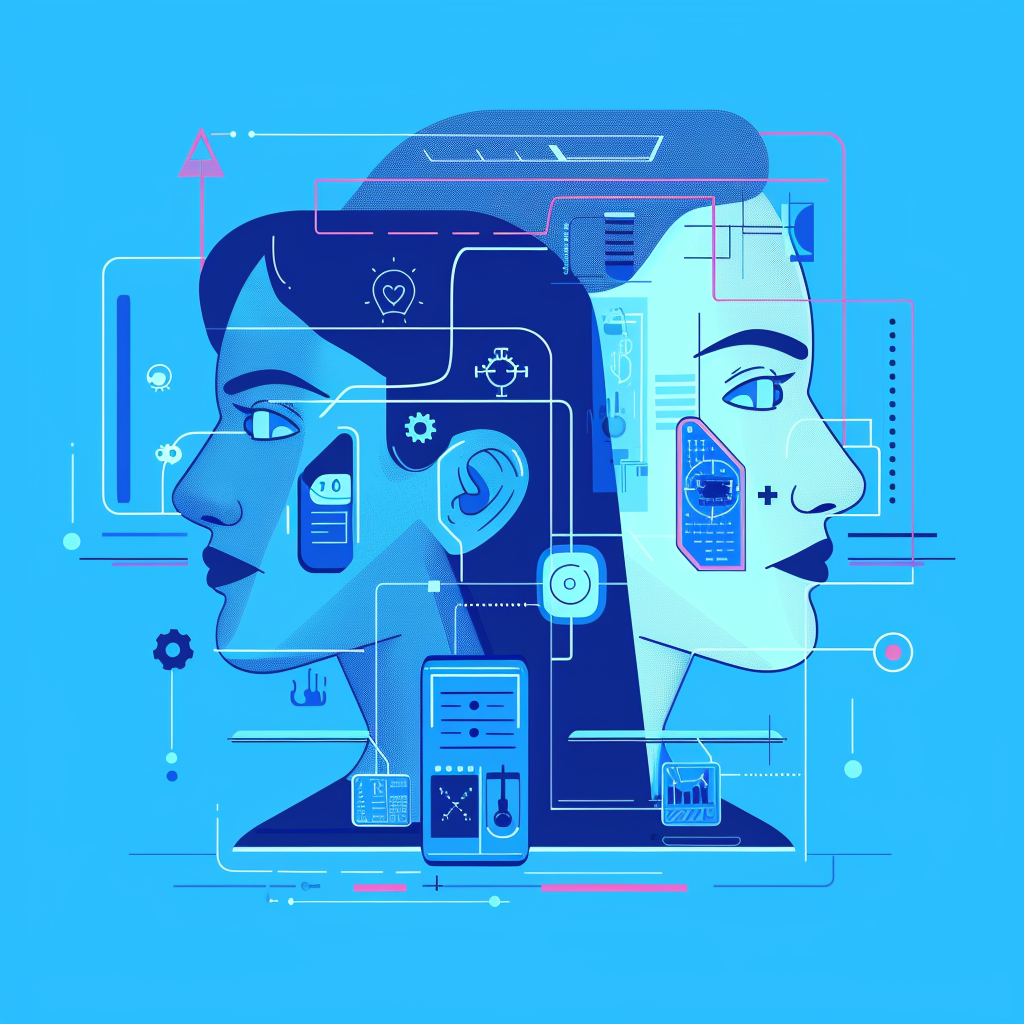Misleading ML algorithms and neural networks can happen easily — a bit of noise to data here and there, and the algorithms start misclassifying things. For those relying on AI and ML services for our future, any misclassification casts a shadow over the development of AI technology.
To avoid misclassification, there appeared a new idea to allow neural networks to visualize new patterns like sample train data. Eventually, there appeared the first Generative Adversarial Network, delivering new fake results similar to the original.
What does GAN mean? In this article, we’ll provide you with a comprehensive guide to this phenomenon.

What is GAN?
To better apprehend what Generative Adversarial Networks (GANs) are, let’s break the concept into three elements:
- Generative means studying a generative model, explaining how data is optically created.
- Adversarial means that model training takes place in an antagonistic environment.
- Networks are deep neural networks used for many training objectives.
GANs feature two models/categories accountable for uncovering patterns in input data and learning them: Generator and Discriminator.
GAN Generator
It’s a neural network engaged in fake (plausible) data creation. The Generator’s core goal is to make the Discriminator sort out fake data outputs as real. A GAN has a part accountable for Generator training. It includes a noisy input vector, the Generator net accountable for converting random inputs into data samples, the Discriminator net that categorizes data, and Generator loss that disciplines the Generator if it fails to fool the Discriminator.
GAN Discriminator
It’s a neural network engaged in identifying real data from the fake one rendered by the Generator. The data stems from two roots: real data samples utilized by the Discriminator as positive examples and fake (plausible) data samples created by the Generator and applied as negative samples during training.
For training, the Discriminator binds to 2 loss functions, neglecting the Generator loss and utilizing the Discriminator loss exclusively. The Discriminator loss can impose a sanction on the Discriminator if real data examples are misclassified as fake and vice versa.
How Do GANs Work?
As a prominent framework for approaching generative AI, a GAN has a very specific workflow.
So, how do Generative Adversarial Networks work? Say you want to draw a picture of a house, but drawing is not your best skill. You could ask your colleague or friend to draw a house for you and then copy their picture. This flow resembles supervised learning, where a person has a data set of samples and trains a model to foresee an accurate label for each sample.
But if you have no access to labeled images of a house, you can still imagine a building and draw something from your imagination, right? After drawing, you can ask your colleague or friend whether your picture resembles a picture of a house. Their replies will help you adjust the picture accordingly. This is the opposite side of supervised learning: a person has no labeled data, but they learn the underlying structure of this data.

And this is how GANs AI runs. The Generator applies a noise vector to generate sham images. The Discriminator applies both true and imposter house images and tells the difference between both. The better the Generator becomes at generating pictures, the more profound the Discriminator becomes in identifying them.
The training flow takes place in a feedback loop. It takes as much time as the Generator requires to deliver images very similar to real and as much time as the Discriminator requires to tell the difference. The flow encompasses the following steps:
- The Generator generates fake data.
- The Discriminator measures fake data and real data to tell the difference between them.
- The Generator uses the Discriminator’s feedback and generates more realistic images.
- The Discriminator improves its skills in detecting plausible images.
- The cycle repeats, making both key components develop until both become experts.
Yet, the flow is not perfect and may have complications:
- Finding a balance between both components is problematic, so many training sessions collapse.
- It’s intricate to decide how real or fake a generated picture is because lots of things depend on personal perception.
Types of GANs
Differences in types of Generative Adversarial Networks are determined by differences in original architecture extensions and specific modifications to the Generator or/and the Discriminator.
Let’s explain Generative Adversarial Networks:
Conditional (cGAN)
cGANs allow the Generator to be conditioned on/influenced by a supplementary input vector. For instance, conditioning generates images in line with specified categories, classes, attributes, etc. cGAN architecture is similar to that of a traditional GAN, where a condition vector is strung together with the input noise vector. The Discriminator environment is also modified and studies two inputs: the generated image and the condition.
The key advantage of this GAN model is that it gives better control over the process of image generation. This advantage is useful for image synthesis or editing, where a user must obtain images with very specific characteristics.

Deep Convolutional (DCGANs)
DCGANs use deep convolutional neural networks in the Generator and the Discriminator to generate high-quality images with deep textures and fine details. DCGAN architecture comprises diverse convolutional tiers in the Generator and the Discriminator and several fully connected tiers. The Generator uses a noise vector as an information input and generates images. Meanwhile, the discriminator takes an image as input and outputs the likelihood, representing if this image is real.
DCGANs’ main advantage is the ability to deliver high-quality pictures that can’t be generated by other GANs. This is possible thanks to convolutional tiers. Today, alongside other generative AI tools, DCGANs are changing different industries, especially image editing and synthesis.
Wasserstein (WGANs)
WGANs use the Earth Mover’s (Wasserstein) distance to measure real data vs. generated distributions and offer advantages that traditional GANs don’t have: reliable gradient information and enhanced stability. The architecture of GANs and WGANs are identical. The only difference is that WGANs use continuous output to estimate the distance between fake and real data distributions.
During training, WGANs deliver more reliable gradient information, thus eliminating cases of mode collapse or vanishing gradients. By directly measuring the distance, applying a WGAN gives a definite quality measure of generated illustrations.
CycleGANs
CycleGANs are used for assignments like image converting and similar image-to-image translation tasks. While traditional Generative Adversarial Networks require paired data for training, CycleGANs don’t. Thus, they are more flexible and can be easily applied. CycleGANs’ architecture has two Generators and two Discriminators. Generator 1 takes an image from one domain as input and generates an image in a different domain. Generator 2 uses a generated image as input and produces an image in its original domain. Both discriminators work to distinguish between fake and real illustrations across domains.
Despite benefits like ease of use and flexibility, CycleGANs pose significant challenges: training complexity, mode collapse risks, and the need for thorough hyperparameters tuning.
StyleGANs
StyleGANs are recognized for their ability to produce high-quality and very lifelike images. The first network was designed and launched by Tero Karras in 2019 and soon after evolved to StyleGAN2. The network’s core is style modulation tiers, allowing strict control over an image’s visual side. For image generation, StyleGANs combine random noise and a style, thus shaping anticipated results.
The technical abilities of StyleGANs have opened lots of possibilities for creativity in AI applications like those in design or art. Researchers have gone further than that and explored StyleGAN extensions to push new AI services and uses in the generative AI field.
GAN Technology Applications
The number of GAN applications keeps growing. In this blog post, we’ll concentrate on the core ones.
Image Generation & Enhancement
The application of conditioned GANs like cGANs and StyleGANs has successfully generated sketches, high-resolution images, and realistic illustrations. GAN models are favoured for their ability to seize details and generate different outputs. This encourages researchers to apply these models in creating sets of data to train Machine Learning models.
Text-to-Image Generation
For visual representation needs, a GAN can generate pictures based on textual inputs. This is applicable for creative advertisement cases or product design and development. Moreover, GANs are capable of generating images of unreal objects or rare ones that are hard to photograph. This application is challenging, though: inputs should be very direct and transparent for the network to understand them; also, the range of images for unreal objects is limited.
Video Synthesis
Generative Adversarial Networks are extensively applied for video synthesis due to their ability to generate realistic faces, landscapes, and objects. The generated video is widely used in game software development and advertising. GANs can generate new frames for video production, following real video patterns. However, training a GAN to generate videos requires much computing power.
Data Augmentation for ML
Data augmentation diversifies the training data set, thus enhancing ML. GANs are helpful in creating numerous realistic dataset variations for GAN computer vision assignments to streamline a model’s generalization strength and robustness. Chances of overlifting are reduced. This approach is extremely efficient if collecting data is either challenging or limited. The only drawback is that data augmentation using GAN requires much computing power and can’t be performed on low-power hardware.

Cybersecurity Improvement
The application of Artificial Intelligence technologies in the banking sector is not new, but GANs have taken it to a new level. GANs are trained to discover fraud instances and are effectively applied to make deep learning models more solid. Most financial institutions use Generative Adversarial networks trained to detect malicious data added to images or text. With GANs, engineers can create and apply fake samples to train the network.
Health Abnormalities Detection
Before the global popularity of GANs, AI was actively used in health tech for medical records management or as a part of the Chatbot technology. Today, the network is used for tumour detection: it compares healthy organ image data sets and identifies tumours. Detection has become more accurate and faster, helping to reduce pressure on doctors to save patients in the early stages. Other applications are still under research. Today, the pharmaceutical field also looks promising.
3D Modelling
GANs are applicable in 3D modeling, too. They can generate 3D models used in animated movies, cartoons, or video games. The network requires a data set of 2D images to deliver results. After analyzing the data, the network can recreate 3D models of furniture, vehicles, tools, and more. This helps animators save time on repetitive tasks, while production companies can reduce their budget expenses.
Content Creation
Content-related Generative Adversarial Networks projects are gaining popularity. The applications of GAN software to deliver high-quality texts for the edtech sector, music pieces for songwriters, and product designs for ad teams allows us to unleash a team’s creative potential. You can compose personalized music tracks of different genres, generate letters, emails, poems, or lines of code, or deliver excellent prototypes.
Advantages and Disadvantages of GANs
Like any technology, GANs have advantages and disadvantages. Let’s have a look at both.
Advantages of GANs are their ability to:
- generate high-quality, high-resolution, and realistic pictures;
- generate different data samples to be used in ML model training and improvement;
- converge faster than alternative generative models and tools;
- learn from numerous data inputs (with or without label information)
- produce highly specific data collections of data;
- compare data with similar instances and make corrections;
- replace employees’ labour hours and lower labour costs.
Disadvantages of GANs are:
- immense complexity due to advanced data sets that require significant investments in training and education for accurate model creation;
- absence of criteria for results evaluation, which is challenging depending on the subjectivity of a task;
- the constant need for large training data sets to avoid receiving inaccurate results.
Bottom Line
It’s evident from Generative Adversarial Networks examples that this AI technology does have a bright future paved with new techniques, improved architectures, and promising results across industries. This means that training and using GANs for the benefit of your business should be a priority. Let’s talk about GANs in detail to investigate possible application areas for your business.




